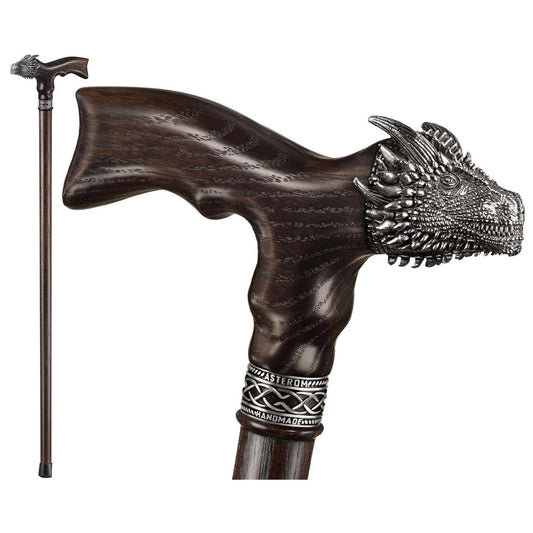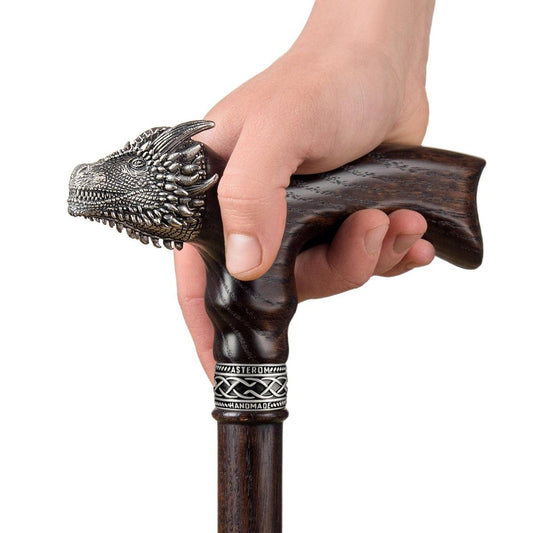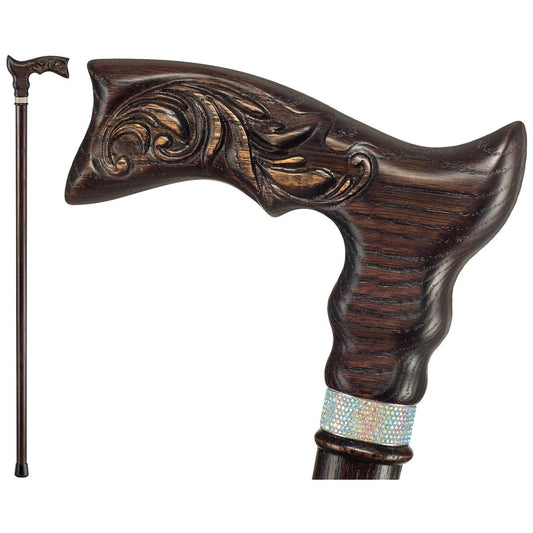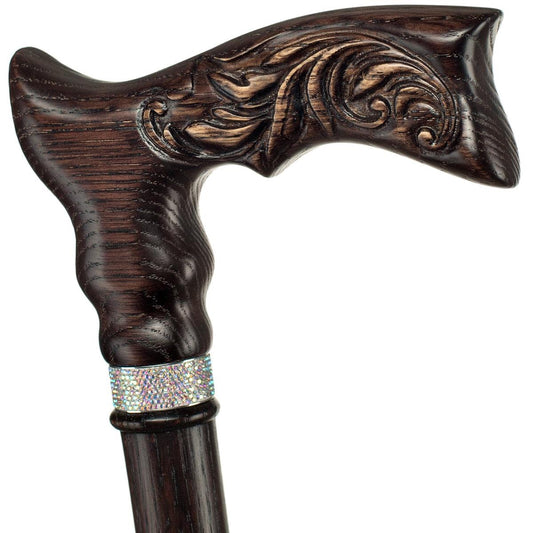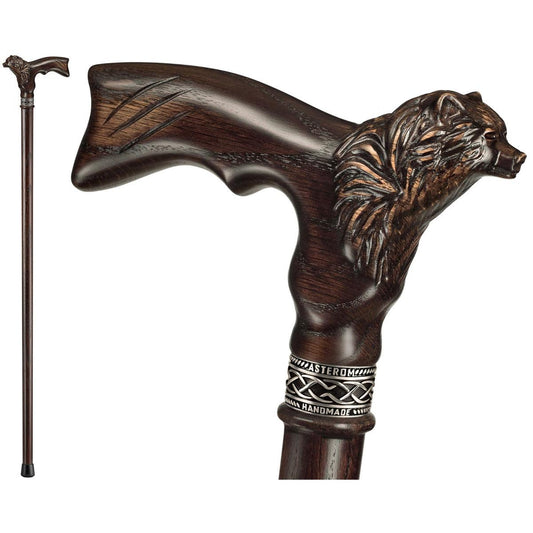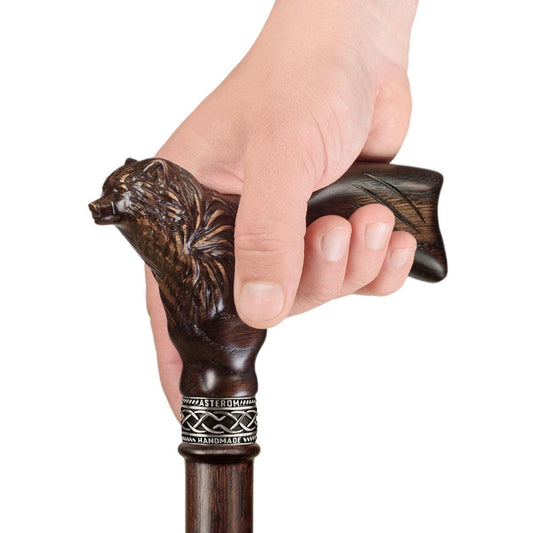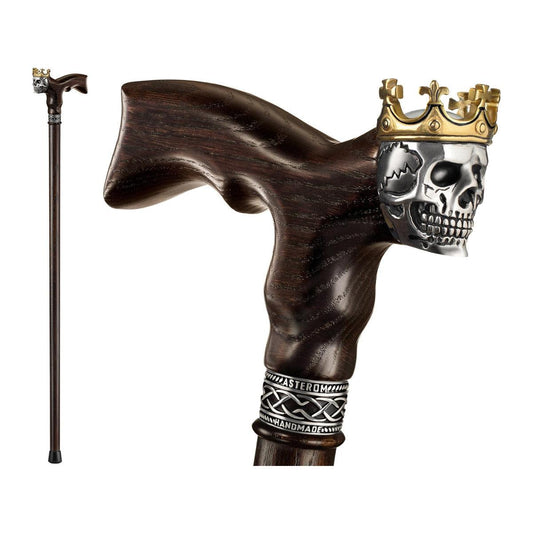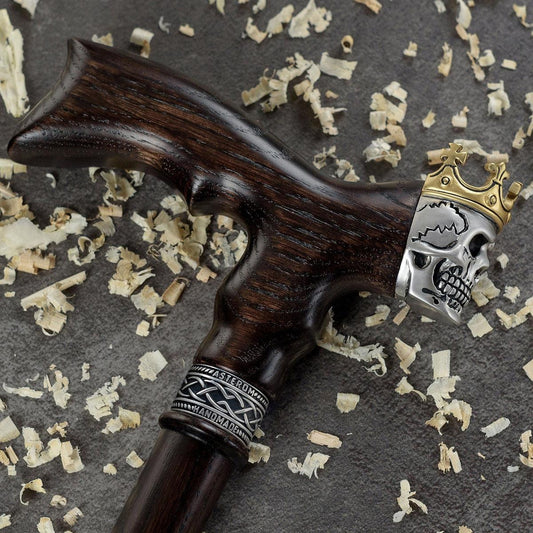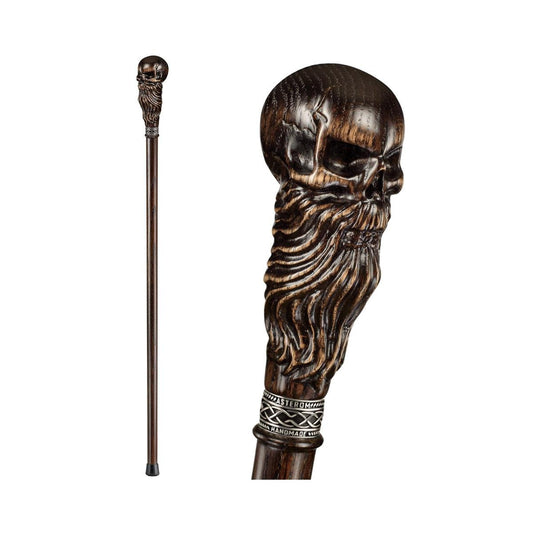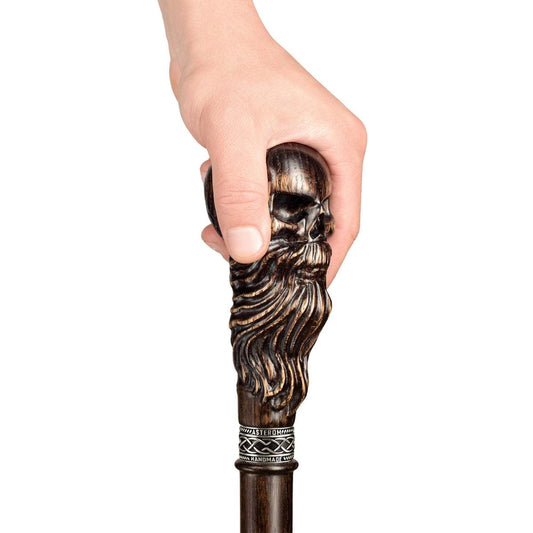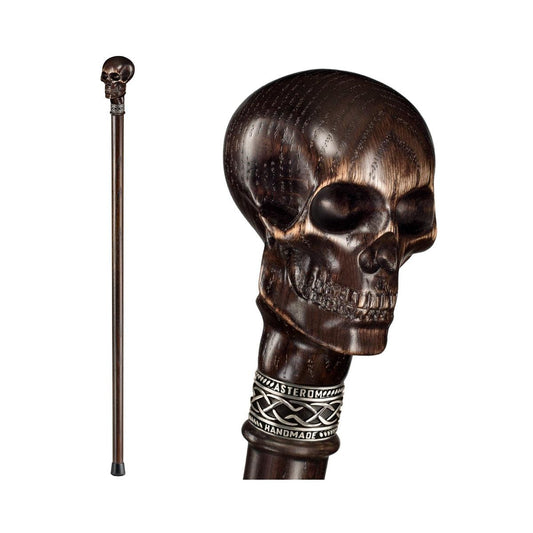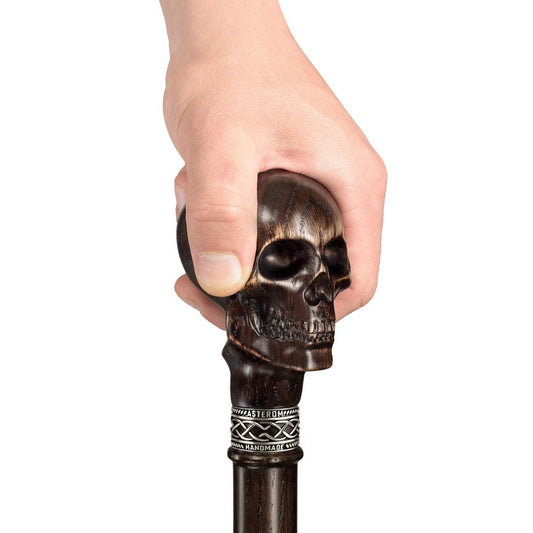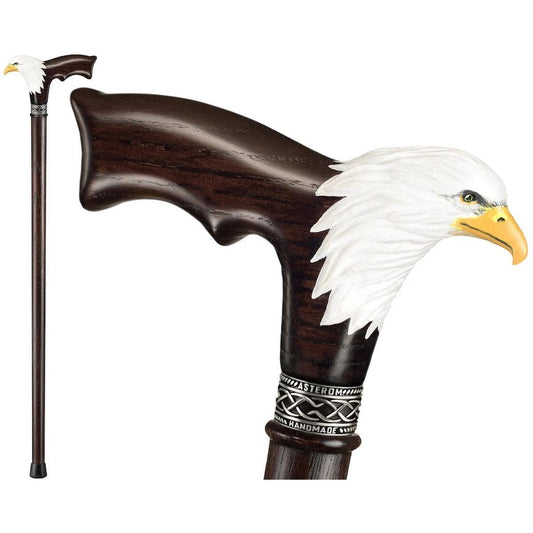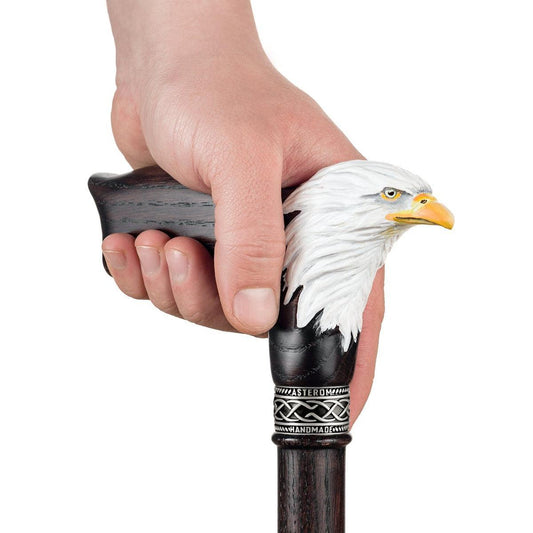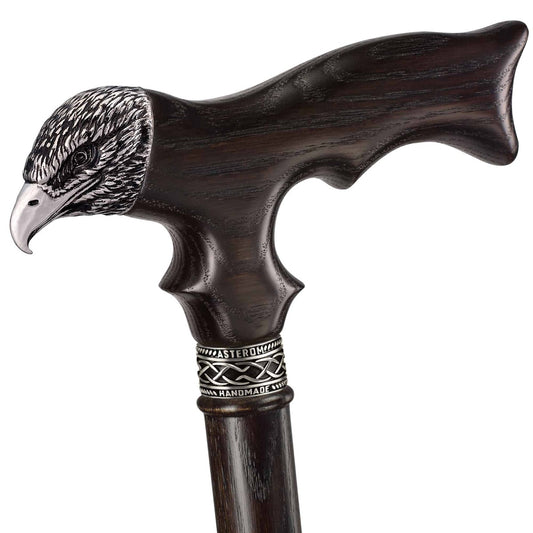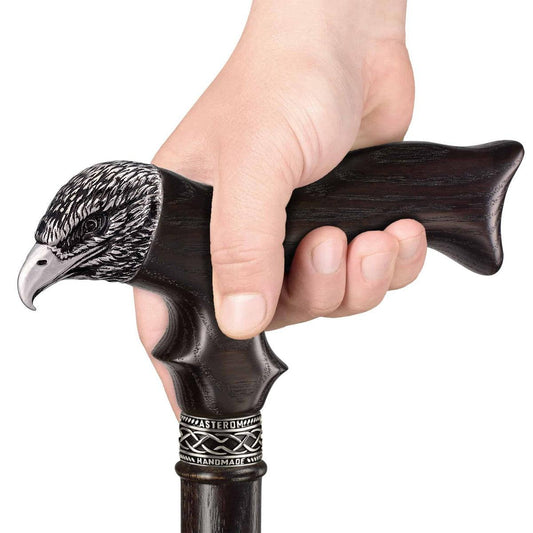When we think of walking aids, we often tend to focus on the needs of adults. However, it’s important to remember that many young and spirited individuals rely on these tools for support.
Children with mobility challenges often require canes to help them move around safely and comfortably.
Unfortunately, finding the perfect cane for a child can be complex. It’s about choosing the right size and weight and considering the child’s specific needs and preferences.
Factors such as the grip type, the cane material, and the handle length are crucial in ensuring that the child feels secure and supported.
In this article, we’ll delve into the world of children and canes and explore the intricacies of finding the perfect fit for these young souls.
Addressing the Needs of Children and Young Adults
There are distinct challenges and considerations when selecting a walking cane for children and young adults.
According to Healthline, children progress through a series of growth stages. In addition, Every child grows and develops at an individual pace It’s essential to understand those needs and how best to address them. For instance, the cane must be lightweight and easy to maneuver, as younger users may need more strength or dexterity to handle a heavier or more complex device.
Additionally, the cane should be adjustable to accommodate growth spurts and changes in posture. It’s also important to consider the aesthetic preferences of younger users to ensure they feel comfortable and confident using the cane.
Considering these factors, we can help ensure that children and young adults have the right cane to support their mobility and independence.
Recognizing the Dynamic Nature of Growth
Children are constantly growing, both physically and in their abilities. This dynamic nature means that a cane that fits perfectly today might become unsuitable in just a few months.
Recognizing this ever-changing landscape and preparing for regular adjustments and potential replacements is essential.
It’s essential to keep an eye on your child’s height and posture as they grow, especially regarding their cane usage. Making even minor adjustments can significantly enhance their comfort and overall functionality.
The Importance of Adaptability
As children grow older, their preferences and needs tend to change. What was once their favorite color or pattern may no longer be as appealing.
In addition to aesthetics, their physical abilities, such as grip strength and walking style, can develop and evolve.
As a result, the function of the cane they use may also change, requiring adjustments to suit their current needs better.
When you choose canes, it’s always wise to go for those offering functionality and aesthetic flexibility. This way, you can be sure your cane will remain a trusted companion even as your preferences and needs may evolve.
Balancing Independence with Safety
For children and young adults, a cane is much more than just a device to aid mobility. It is a powerful symbol of independence, allowing them to explore and navigate the world around them confidently.
However, balancing this newfound independence and safety is crucial, ensuring that the cane provides the necessary support without posing any risks or hazards.
It’s essential to keep an eye on the condition of your cane, mainly the grip and tip, to detect any signs of wear and tear. Doing so ensures that your cane provides the right balance of safety and freedom, which will be essential for your future use.
Understanding the Emotional Aspect
Children who use a cane may encounter emotional challenges that are unique to their situation. These challenges may include feeling different from their peers or having to answer questions about their cane, which can sometimes lead to feelings of self-consciousness.
It is of utmost importance to acknowledge and address these emotional aspects and to create an environment where the child feels comfortable and confident using their cane. By doing so, we can ensure that the child has a positive experience and feels included and accepted by their community.
Encourage open conversations with your child, discussing their worries or emotions. It may be helpful to explore books or stories that depict individuals who use canes positively and upliftingly, emphasizing the notion that everyone is extraordinary and exceptional in their own way.

Challenges in Finding the Right Size for Kids
Although it can be challenging to find the perfect cane for a child, many options are still available on the market.
Prioritizing size, weight, and design is essential to ensure the best fit possible. When a child has a cane that fits them well, it can help with posture, comfort, and safety. With some patience and effort, finding the right cane for any child in need is possible.
In this section, we will examine the common challenges you may face in your search for a suitable walking cane for kids. Let’s jump straight in!
What are the common issues faced when searching for children’s canes?
When it comes to canes for children, there are a multitude of challenges that one may face.
For instance, the handles may be too broad for tiny palms to grip securely, and the length of the cane may not adjust to accommodate a child’s growth spurt.
Additionally, there is the matter of design - children often desire canes that reflect their personalities, which may only sometimes align with the available options. All of these factors must be taken into consideration when selecting a cane that is both functional and appealing for a child.
Before embarking on the quest for the perfect cane, take accurate measurements of the child’s height and arm length. Keep these updated and refer to them during purchases.
Tips for Parents and Guardians
When choosing walking canes for adults, the focus is often on style and function. While these factors remain essential when buying children’s canes, one must also consider growth, adaptability, and the ever-evolving needs of a young user.
Here are some insights and tips to guide parents and guardians in this journey.
Understanding the Unique Needs of Your Child
Every child is different, with unique mobility challenges and requirements. Before you start shopping for walking canes for kids, take a moment to understand your child’s specific needs.
Is the cane for temporary support, or will it be a long-term companion? Does your child have any specific grip preferences or postural challenges?
Engage in open conversations with your child. Their feedback and expert opinions can provide invaluable insights into the type of cane best suited for them.
Prioritizing Comfort and Functionality
When choosing a cane for children, it’s essential to consider its aesthetics, comfort, and functionality.
While children may want their canes to reflect their personality, it’s crucial to prioritize their safety and ease of use.
Look for canes with ergonomic grips that provide a comfortable and secure hold, adjustable lengths to accommodate different heights and postures, and sturdy construction to ensure durability and stability.
Children can have a positive and empowering experience using their mobility aid by selecting a cane that meets these criteria.
As your child begins to use a cane, it will be essential to test different options to find the most comfortable fit. By prioritizing comfort, your child can use the cane confidently and effectively.
Involving the Child in the Selection Process
When children are allowed a say in selecting their cane, they tend to feel a sense of responsibility and attachment toward it.
This involvement can lead to a smoother and more positive transition to using the cane. The feeling of ownership and pride in their cane can also boost their confidence and self-esteem.
Get ready to involve your child in the cane selection process! From picking out colors and designs to selecting the type of cane, make sure your child feels included and listened to every step of the way.
Seeking Peer Support
As a parent or guardian of a cane user, you may find it beneficial to connect with other individuals who have gone through a similar experience. Doing so can gain valuable insights, practical tips, and shared experiences that can help you navigate the journey ahead.
Joining a community of other parents or guardians of cane users can also provide support and understanding, creating a space to share your concerns and receive encouragement from those who truly understand what you’re going through.
Consider joining support groups or online forums dedicated to parents of children using mobility aids. The shared wisdom and camaraderie can be immensely beneficial.
Educating Siblings and Friends
When a child relies on a cane for assistance, the support and understanding of their siblings and friends can significantly impact their experience. It is crucial to educate those around the child about the cane’s purpose, how it is used, and why being supportive is so important. Creating a positive and inclusive environment can make a difference for the child and their well-being.

Expert Advice: Pediatric Physiotherapists Weigh In
When it comes to young cane users, the role of pediatric physiotherapists cannot be overstated. Their exceptional training and in-depth knowledge of child development make them an invaluable asset in the journey of these young individuals. They go beyond just taking measurements and giving ergonomic advice and instead focus on understanding the intricate details of a child’s mobility, posture, and overall physical and mental health. This comprehensive approach ensures that young cane users receive the best care and support to improve their quality of life.
The Role of Pediatric Physiotherapists in Cane Selection
Choosing the right cane is more than just about size and design. It’s about understanding the unique biomechanics of a child’s body, their specific challenges, and their growth trajectory.
Pediatric physiotherapists bring a wealth of knowledge to the table, ensuring that the cane is fit for the present and adaptable to the future.
If you’re planning to buy a cane, it’s a good idea to think ahead and schedule a consultation with a pediatric physiotherapist. This way, you’ll be able to make a well-informed decision and be prepared for what’s to come.
Training and Adaptation
Handing a cane to a child and expecting them to use it effectively is akin to giving someone a musical instrument and anticipating a symphony. Proper training is crucial. Pediatric physiotherapists often provide tailored training sessions, helping children adapt to their canes and teaching them the correct posture, grip, and stride.
If you plan to introduce your child to using a cane, it is essential to schedule regular training sessions, especially in the beginning. This will help your child learn how to use the cane correctly and reduce the risk of discomfort or strain.
Monitoring Growth and Adjustments
Children grow, and with growth come changes in their mobility needs. Regular check-ins with pediatric physiotherapists can help make necessary adjustments to the cane, ensuring it remains a perfect fit. These experts can guide the way, whether lengthening the cane, changing the grip, or switching to a different type of cane.
Schedule bi-annual or annual reviews with the physiotherapist. As the child grows, these sessions can help make timely adjustments, ensuring optimal comfort and support.
Emotional and Psychological Support:
Beyond the physical, pediatric physiotherapists often play a pivotal role in offering emotional and psychological support.
Using a cane can sometimes be a daunting experience for a child, filled with apprehensions and questions. With their compassionate approach, these experts help build confidence, address concerns, and ensure that the child feels empowered in their journey.
Encourage open communication between the child and the physiotherapist. It’s essential that the child feels comfortable voicing their concerns, fears, and even their joys related to cane usage.
Stories from Young Cane Users and Their Journeys
The cane is not just a mobility aid. It’s a symbol of resilience and strength. Each child who wields a cane has a unique story of overcoming challenges, achieving victories, and experiencing personal growth.
Take, for instance, Clara, a young girl who, despite her physical limitations, confidently danced at her school recital with her cane as her graceful partner. Or Tim, who adorned his cane with stickers from every place he visited, turning it into a joyful travel companion.
Through their inspiring stories, we witness the unbreakable spirit of young cane users who refuse to be defined by their disabilities.
How have canes positively impacted the lives of young users?
Beyond the evident physical support, canes have boosted confidence, fostered independence, and sparked creativity in many young users.
Engage with communities where parents and young cane users share their experiences. Their stories can offer both comfort and inspiration.
Frequently Asked Questions
Why is it essential to address the unique needs of children and young adults regarding canes?
Children and young adults are in a constant state of growth and development. Their mobility needs, preferences, and emotional connection to a cane can differ significantly from adults. Addressing these unique requirements ensures the cane remains a supportive, comfortable, and cherished companion throughout its growth phases.
How often should a child’s cane be adjusted or replaced?
Regular monitoring is crucial, given the dynamic nature of a child’s growth. It’s advisable to check the cane’s fit every few months and make necessary adjustments. Depending on the child’s growth spurt, a replacement might be needed annually or bi-annually.
Are there specific cane designs tailored for children?
Yes, many manufacturers recognize the unique aesthetic preferences of children and offer canes in vibrant colors, with customizable designs, and even with features like LED lights. Balancing aesthetics with functionality is essential to ensure the cane remains a reliable support tool.
How can parents help their children emotionally adjust to using a cane?
Open communication is vital. Parents should encourage their children to voice their feelings, concerns, and even joys related to cane usage. Sharing stories of other young cane users, engaging in support groups, and even reading books that portray cane users positively can help in building confidence and a sense of belonging.
What role do pediatric physiotherapists play in a child’s cane journey?
Pediatric physiotherapists are experts in child development and mobility. They assist in selecting the right cane, offer training sessions to ensure proper usage, make necessary adjustments as the child grows, and provide emotional and psychological support. Their expertise ensures that the cane remains a perfect physical and dynamic fit.
Are there any inspiring stories of young cane users?
Absolutely! Every child with a cane has a unique and inspiring story. From children who’ve used their canes in dance recitals to those who’ve personalized their canes to reflect their adventures, these stories are a testament to young cane users’ resilience, creativity, and spirit.
How can parents ensure the safety of their children while using canes?
Regularly inspecting the cane, especially the grip and tip, is crucial. Parents should also ensure that the cane is of the right size and fit. Training sessions with pediatric physiotherapists can teach children the correct posture, grip, and stride, ensuring optimal safety.
How can a cane boost a child’s confidence?
When chosen and used correctly, a cane offers children a sense of independence. It allows them to confidently navigate the world, knowing they have a reliable support system. Moreover, when children are involved in the selection and customization process, the cane becomes an extension of their personality, further boosting their self-esteem.
In Conclusion
Navigating the world of canes for children and young adults is a journey of understanding, adaptability, and compassion. As we’ve explored, the needs of our younger generation are multifaceted, blending the practicalities of growth and mobility with the emotional nuances of childhood and adolescence.
It’s not just about finding a cane that fits; it’s about finding one that resonates. One that empowers, uplifts, and becomes a beacon of confidence for its young users. A cane that, while providing the necessary support, also celebrates the spirit of youth, adventure, and exploration.
Parents, guardians, and caregivers play a pivotal role in this journey. They can transform the cane from a mere mobility aid into a cherished companion through open dialogue, informed choices, and creativity. A companion that supports the physical strides and the emotional and psychological leaps that children and young adults take as they navigate the world.
As we wrap up this exploration, remember that every child’s journey is unique. And in this journey, the right cane can make all the difference, offering support and a sense of identity, independence, and pride. Let’s ensure that our young ones strive confidently, with a cane that genuinely understands and celebrates them.


